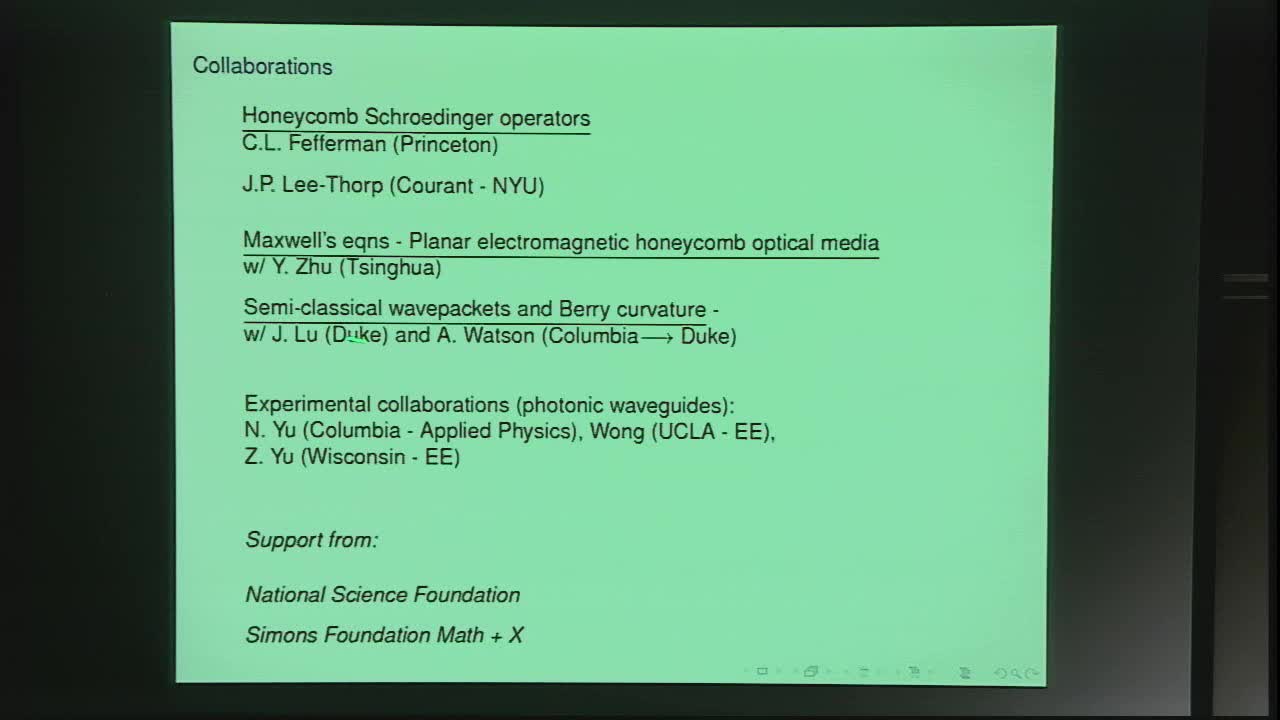Honeycomb structures, Edge States and the Strong Binding Regime
Presenter
May 18, 2017
Abstract
We discuss the 2D Schroedinger equation for a large class of periodic potentials
with the symmetry of a hexagonal tiling of the plane.
A special case consists of periodic potentials which are superpositions of localized potential wells,
centered on the vertices of a regular honeycomb structure,
corresponding to the single electron model of graphene and its artificial analogues.
We prove that for sufficiently deep potentials (strong binding),
the lowest two Floquet-Bloch dispersion surfaces,
when appropriately rescaled, are uniformly close to those of the celebrated
two-band tight-binding model, introduced by PR Wallace (1947) in his pioneering study of graphite.
We then discuss corollaries, in the strong binding regime, on
(a) the existence of spectral gaps for honeycomb potentials with PT symmetry-breaking perturbations,
and (b) the existence of topologically protected edge states for honeycomb structures with "rational edges”.
This is joint work with CL Fefferman and JP Lee-Thorp.
Extensions to the case of Maxwell’s equations (with Y Zhu and JP Lee-Thorp) are also discussed.
